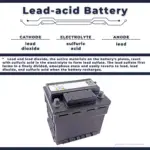Explore circuit breaker rating equations, their significance in electrical engineering, and an example calculation for system safety.
Understanding Circuit Breaker Rating Equations
A circuit breaker plays a critical role in safeguarding electrical circuits from excessive current flow, which can lead to equipment damage, electrical fires, and other hazards. To ensure the proper functioning of a circuit breaker, it is essential to understand its rating equation. This article delves into the details of circuit breaker rating equations and their significance in electrical engineering.
The Basics of Circuit Breaker Ratings
Circuit breakers come with several ratings, each serving a specific purpose. The primary ratings of a circuit breaker include:
- Rated voltage (Vr)
- Rated current (Ir)
- Breaking capacity (Isc)
- Making capacity (Im)
- Short-time withstand current (Ist)
Each of these ratings is essential in ensuring the proper selection and functioning of a circuit breaker in any electrical system. The rating equation helps engineers calculate these parameters to design safe and efficient electrical circuits.
Circuit Breaker Rating Equation
The circuit breaker rating equation takes into account several factors, such as voltage, current, breaking capacity, and time. The equation ensures the selected circuit breaker meets the required performance and safety standards for a given application. Although the exact equation may vary depending on the type and manufacturer of the circuit breaker, the following general equation can be used:
- Vr ≥ Vsys
- Ir ≥ Iload
- Isc ≥ Ifault
- Im ≥ Ip
- Ist ≥ Ishort × tshort
Where:
- Vr is the rated voltage of the circuit breaker
- Vsys is the system voltage
- Ir is the rated current of the circuit breaker
- Iload is the load current
- Isc is the breaking capacity of the circuit breaker
- Ifault is the maximum fault current
- Im is the making capacity of the circuit breaker
- Ip is the peak current during a fault
- Ist is the short-time withstand current of the circuit breaker
- Ishort is the short-circuit current
- tshort is the short-time delay of the circuit breaker
Conclusion
Understanding the circuit breaker rating equation is crucial in designing safe and efficient electrical systems. By calculating the appropriate parameters, engineers can select the right circuit breaker for any application, ensuring the protection of both equipment and personnel from the risks of excessive current flow.
Example of Circuit Breaker Rating Calculation
Let’s consider a simple example to demonstrate the calculation of circuit breaker ratings for a given electrical system. Suppose we have an electrical system with the following parameters:
- System voltage (Vsys): 415 V
- Load current (Iload): 50 A
- Maximum fault current (Ifault): 10 kA
- Peak current during a fault (Ip): 20 kA
- Short-circuit current (Ishort): 5 kA
- Short-time delay (tshort): 0.1 s
Using the circuit breaker rating equation, we can now calculate the required ratings for our circuit breaker:
- Vr ≥ Vsys: The rated voltage of the circuit breaker should be greater than or equal to the system voltage. Therefore, Vr ≥ 415 V.
- Ir ≥ Iload: The rated current of the circuit breaker should be greater than or equal to the load current. Therefore, Ir ≥ 50 A.
- Isc ≥ Ifault: The breaking capacity of the circuit breaker should be greater than or equal to the maximum fault current. Therefore, Isc ≥ 10 kA.
- Im ≥ Ip: The making capacity of the circuit breaker should be greater than or equal to the peak current during a fault. Therefore, Im ≥ 20 kA.
- Ist ≥ Ishort × tshort: The short-time withstand current of the circuit breaker should be greater than or equal to the short-circuit current multiplied by the short-time delay. Therefore, Ist ≥ 5 kA × 0.1 s = 500 A.
Based on these calculations, a suitable circuit breaker for this electrical system should have the following minimum ratings:
- Rated voltage (Vr): ≥ 415 V
- Rated current (Ir): ≥ 50 A
- Breaking capacity (Isc): ≥ 10 kA
- Making capacity (Im): ≥ 20 kA
- Short-time withstand current (Ist): ≥ 500 A
By selecting a circuit breaker with these minimum ratings, the electrical system will be adequately protected from excessive current flow, ensuring the safety of equipment and personnel.




